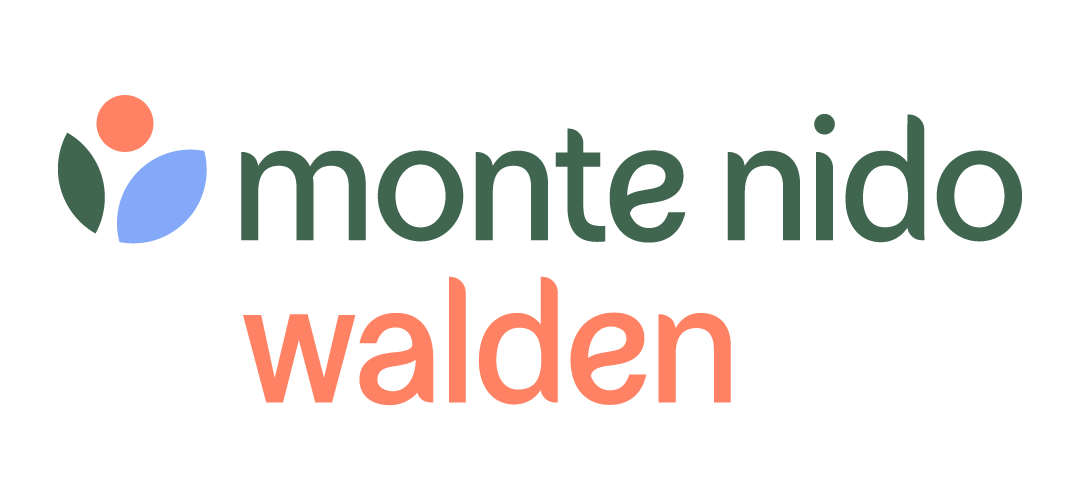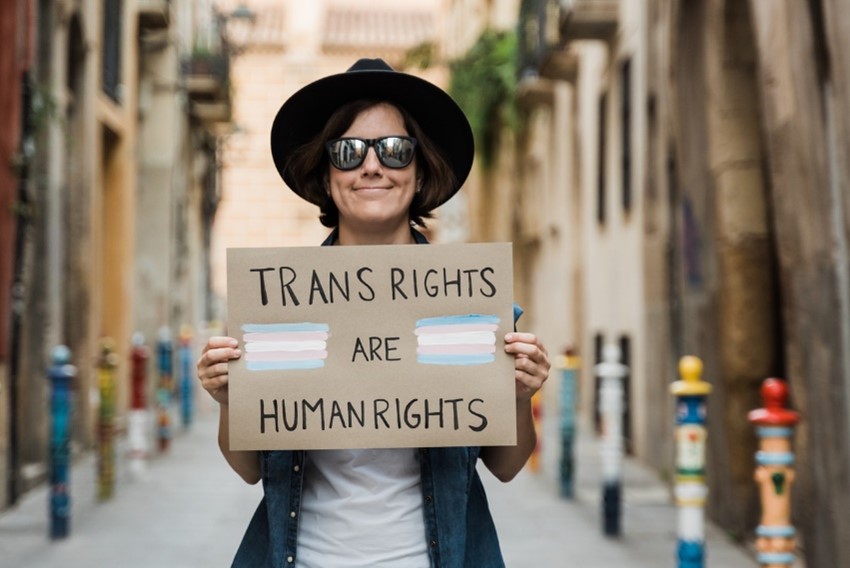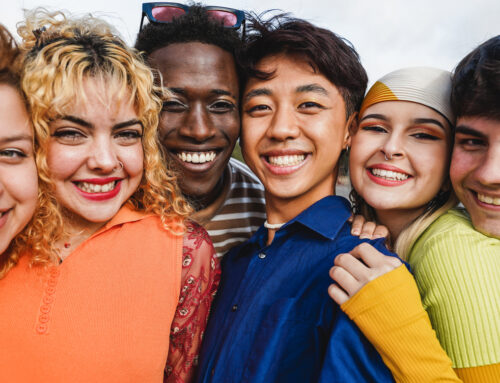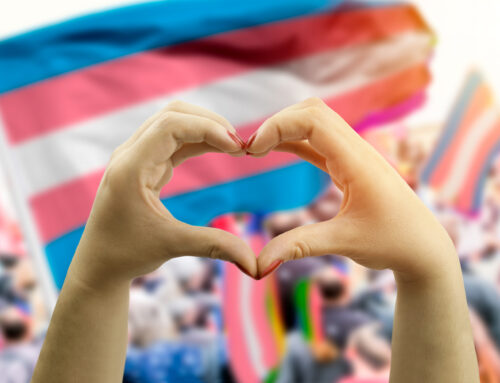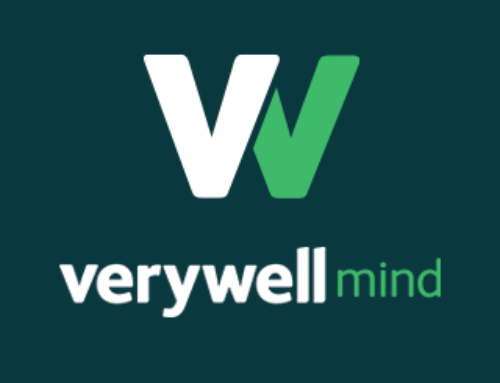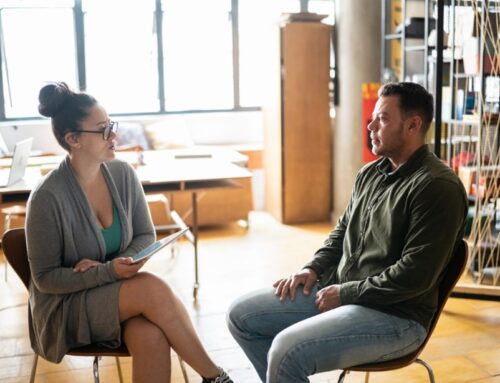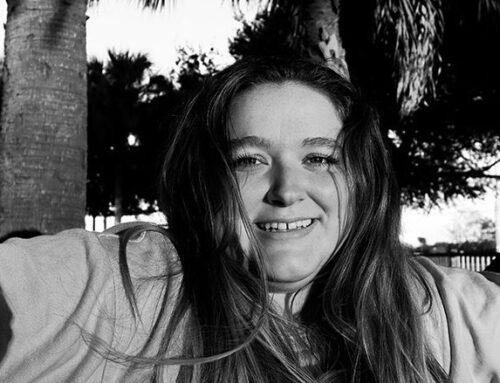The following eating disorder post is a personal account by a former Walden patient. At Walden, we are honored to share recovery stories by including occasional guest blog submissions.
My name is Michael, my pronouns are they/them/theirs, and I’m in active recovery from an eating disorder. I’m a queer, transgender, autistic person who is living with several chronic health conditions.
I want to share my story, how my eating disorder evolved, and how accessing affirming and compassionate providers is what allowed me to start my path toward recovery.
Being told healthy doesn’t come in my size
I have been living in what society codes as a larger body since the day I was born. I now lovingly self-identify as a fat person. However, for most of my life, I never imagined this would be a feature I openly celebrate. I have memories as far back as kindergarten of medical professionals telling me and my caregivers that my body is too large to experience “health” and providing medical guidelines on how to lose weight.
It didn’t take long to learn to hate my body and internalize shame and self-loathing. I also learned that engaging in what I now know are disordered behaviors and harming my body into “health” was the only thing that led providers and society to praise me rather than shame me.
It’s hard to describe the feeling of being a child, having little to no autonomy, and believing that I was a terrible person for something I had no control over. I have heard people with similar stories describe being “prescribed an eating disorder”, and this is something that feels true for my experience.
It didn’t take long for depression and anxiety to set in. I started mental health treatment in middle school after a crisis visit to a psychiatric emergency room. I continued to struggle despite my weekly therapy sessions. I attended all my appointments even though I didn’t find them helpful, mostly because I was a minor and didn’t have much choice. In my head it made sense that the source of my suffering must be my weight just as the doctors had been telling me my entire life.
I attempted countless diets and exercise plans independently, and my disordered behaviors ran unmonitored. I was praised when I was weighed and the number on the scale was less. On the days when the number was higher, there were often conversations about the impending doom my current weight carried for my body. I had no idea until too many years later that the problem with my body wasn’t actually a problem at all.
Connecting and coming out
Outside of my weight and size, I struggled with my identity and questioning who I was without any helpful answers. I only knew that something felt wrong, and that I was very different from most people with who I interacted. It wasn’t until college when I was able to connect with queer and trans folx that I discovered that I’m queer, and later, transgender. Finding the LGBTQ+ community felt like coming home to the most wonderful, amazing, expansive family that I never knew I had.
By the time these discoveries and connections were made, my eating disorder was intricately woven into every thought and moment of my day and was my primary tool for coping with the world around me. Coming out first as queer, and then as trans, was painful, and is still painful sometimes. Coming out never really ends. I used my eating disorder to cope and fell further into it than before without anyone knowing about my struggle.
Finally, a diagnosis
My journey to recovery didn’t begin until I was referred to a registered dietitian when I first visited a clinic to start gender-affirming hormone treatment. After a few sessions with her, I learned she was LGBTQ+, specialized in working with eating disorders, and had extensive experience working with trans folx. I had never worked with anyone who was part of the community in all my prior years of mental health treatment until I met her. It also wasn’t until then that I was officially diagnosed with an eating disorder. Despite my weight, she was able to see through my behaviors and help me understand that they were, in fact, the opposite of what I was taught to believe was healthy. She also referred me to a therapist who was part of the LGBTQ+ community and specialized in working with trans folx who have eating disorders.
With my new supportive team, I was able to talk about coming into myself, coming out to the world, and how my eating disorder showed up in the biggest and smallest situations through those experiences. Even though I still needed residential eating disorder treatment a few years later, my time with those clinicians helped me in ways that are immeasurable. They are why I was able to honestly report my challenges, discuss the intricacies of how my identities and disorders impacted one another, recognize the need for more help, and pursue it.
Intersection of my identity and my eating disorder
After residential treatment, I shifted to Walden’s Rainbow Road’s virtual PHP program. Normally when I enter a new space, I am actively looking and quietly hoping that I will be accepted. At Rainbow Road, from the moment I entered the treatment space, I could see, feel and know that I belonged, I was valued, and that the people there were ready to help lift me up in ways that I needed.
That setting was the first time in my entire life that I have been able to engage in treatment with 100 percent LGBTQ+ staff and in a space that is designed exclusively for LGBTQ+ clients experiencing eating disorders.
Magical healing at Rainbow Road
The Rainbow Road team incorporates culturally responsive care with trauma-informed, weight-neutral approaches to eating disorders treatment. When you put all these elements together, it’s nothing short of magical. In reflecting on my treatment with the Rainbow Road team, I often tell people that my memory with them is of a space that I now consider sacred. Because all staff hold their own lived experience of LGBTQ+ identities on a personal level, the care and treatment that they offer as a result is unmatched for people in the LGBTQ+ community.
I found healing at Rainbow Road in ways that I didn’t know were possible and didn’t know I needed. I tear up as I reflect on how rare that is for people like me and how incredibly lucky I am to have had the chance to be a part of Rainbow Road. I learned so much about myself and others during my time there, and I’m forever grateful for the people in that program.
Reflection from the other side
Looking back, it’s clear to me both body dysmorphia and gender dysphoria were unknowingly present in my childhood. I now have a deep understanding of my gender, sexuality, and neurodivergence that I didn’t have before. I’m able to see how my eating disorder used those pieces during the times of confusion and uncertainty to drive me further into illness. I now know that the doctors who shamed me were wrong. I know that bodies have a set point that they are comfortable at, and my job is to nourish myself, listen to my internal cues, and seek movement for joy rather than intentional harm. However, it took me a very, very long time to reach this point.
I often reflect on my earlier years and how things could have been different for me if I was able to access the support I needed at a young age. Before getting sucked into “what if’s” that do not serve me, I remind myself of something. Things are different for me now. When I say that, I mean that I am still alive and still pushing forward with my healing.
What changed between my childhood and the present is that I was able to connect with providers who were able to provide care that is appropriate and kind to the person I am, the things I have experienced, and the body I am living in. Specifically, I found clinicians who treat eating disorders with a weight-neutral approach, celebrate and affirm my gender identity and sexuality, consider my neurodivergence, and use trauma-informed approaches to care.
Culturally responsive care
When discussing care like the kind I experienced, the phrase culturally competent care is often used. This indicates that the treating clinicians incorporate and acknowledge how the many layers everyone holds within their identity impacts their disorders and treatment needs. Rather than this, I prefer to use the phrase culturally responsive.
Competency indicates that a point of achievement can be reached where everything is known. By shifting to an action-oriented word like respond, the messaging changes. Care can be catered to the needs of the human who is accessing treatment, rather than promising a sense of safety that no one can truly guarantee despite the best of intentions. Even if everything isn’t known when a client enters a space, a clinician can use a foundation of knowledge to respond with appropriate, affirming care, and further educate themselves on specific topics that might be new or unfamiliar.
The best clinicians who I have worked with are able to see the human sitting in front of them, take an intersectional approach to care, and access resources for further education and understanding as needed. These are the people who are promoting healing among populations that often experience much suffering without a treatment approach that centers their identities and challenges. I feel lucky to have been able to reach the right people for me throughout my treatment.
To the helpers, the healers, and all the people who guided me to where I am now, I am forever grateful to you, and for you. With everything I have, thank you.
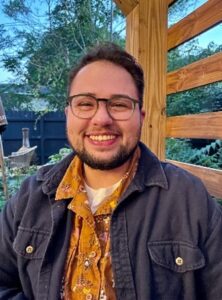 Michael (they/them) resides in western New York with their partner, dog and cat, and finds peace among trees. They feel compelled to share their life story with others and provide education about how intersecting identities impact wellness and recovery. It’s important to Michael to share that white privilege has influenced their experiences and ability to access care. Michael has a bachelor’s degree in public health and a strong passion for working with the LGBTQ+ community. Their goal in the future is to support people in recovery by helping strengthen skills relating to cooking and preparing food.
Michael (they/them) resides in western New York with their partner, dog and cat, and finds peace among trees. They feel compelled to share their life story with others and provide education about how intersecting identities impact wellness and recovery. It’s important to Michael to share that white privilege has influenced their experiences and ability to access care. Michael has a bachelor’s degree in public health and a strong passion for working with the LGBTQ+ community. Their goal in the future is to support people in recovery by helping strengthen skills relating to cooking and preparing food.

